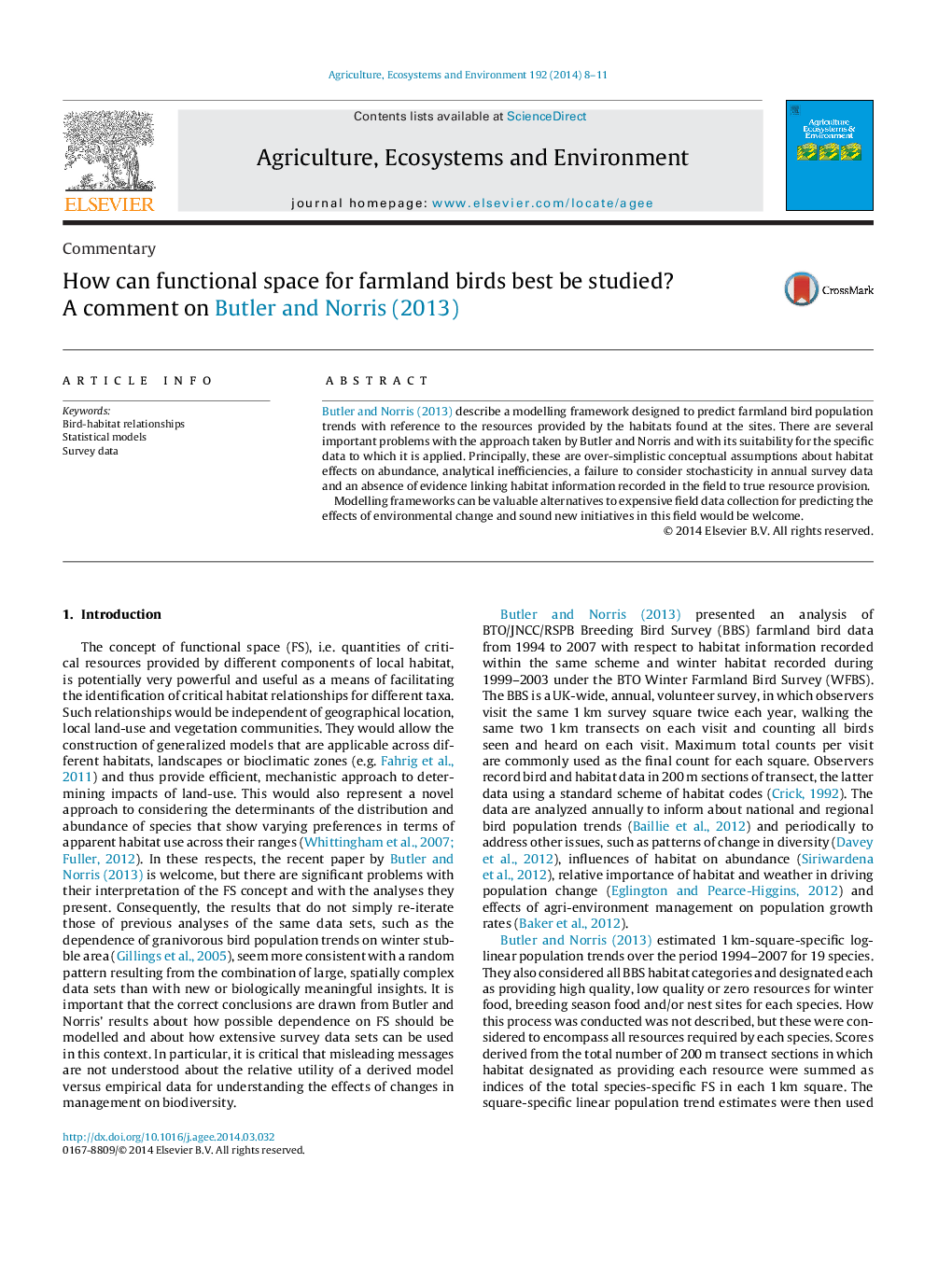| Article ID | Journal | Published Year | Pages | File Type |
|---|---|---|---|---|
| 2413931 | Agriculture, Ecosystems & Environment | 2014 | 4 Pages |
•The modelling process used by Butler and Norris (2013) has significant weaknesses.•Predictive models need to fit the source data and have proven predictive ability.•Sound resource-based models of species abundance would be valuable management tools.
Butler and Norris (2013) describe a modelling framework designed to predict farmland bird population trends with reference to the resources provided by the habitats found at the sites. There are several important problems with the approach taken by Butler and Norris and with its suitability for the specific data to which it is applied. Principally, these are over-simplistic conceptual assumptions about habitat effects on abundance, analytical inefficiencies, a failure to consider stochasticity in annual survey data and an absence of evidence linking habitat information recorded in the field to true resource provision.Modelling frameworks can be valuable alternatives to expensive field data collection for predicting the effects of environmental change and sound new initiatives in this field would be welcome.
